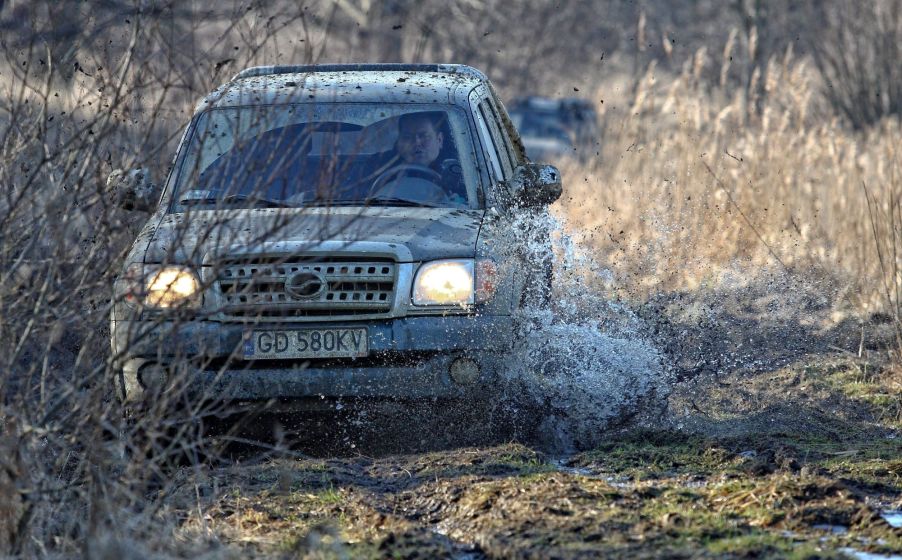
What Is Mudding in a Truck?
Many people purchase trucks for practical reasons, such as their hauling and towing capabilities, powerful engines, and efficient designs. Many of these trucks are incredibly fun to drive, which makes it tempting for truck owners to take their trucks mudding. Unfortunately, you can’t just go mudding everywhere without repercussions, including accidents and plenty of expensive maintenance. Learn more about mudding, where to do it safely, and the best trucks to get if you want to go mudding below.
What is mudding?

Mudding is a popular activity in rural regions that uses wide-open spaces where trucks display their power and agility. Mudding is actually a type of off-roading where drivers maneuver their trucks to get their tires spinning as much as possible to create deep holes in the ground. Many drivers feel a sense of thrill when they see their truck fling mud everywhere, and they enjoy testing their truck’s power and their own ability to handle the vehicle.
Mudding can be a fun way to spend an afternoon or evening but can’t be done without affecting the ground in some capacity. Mudding in your backyard is a recipe for a torn-up and unattractive lawn, and it damages native plants, which can negatively affect wildlife, according to the USDA. Mudding can also harm fish, especially if a driver operates near cold streams where many fish lay eggs.
The aftermath of mudding on land is significant, and it’s important to think about these consequences before deciding where to go mudding. If you’re caught mudding on State or County Roads or Forest Development, you could be fined up to $5,000, and the U.S. Forest Service can sue you to make you pay for the restoration process. That being said, there are ways to go mudding safely and respectfully.
How do you have fun safely?
The best place to go mudding is on your own private property, as this ensures that nobody else’s property or public property gets damaged while you’re having fun in your truck. Alternatively, you can also contact your local forest service office to see if they can recommend any safe and approved areas for mudding. To find the contact information for the office closest to you, visit the U.S. Department of Agriculture Forest Service website.
If you get approval to go on a trail route, stay on marked trails and ensure that your vehicle is allowed on the land before taking it out. It’s also important to never assume that a path with standing water or puddles is safe for your vehicle. This water may be hiding an ultra-deep hole that can make your truck stuck or severely damage it.
Finally, be sure to bring a tool kit that has all the essentials, such as a first aid kit, flashlight, tire repair kit, and even extra clothes, blankets, and snacks in case your vehicle breaks down and you are stranded for the night.
Best trucks for mudding
If mudding is in your blood, it’s important to have the right vehicle when you go out. Mudding can result in costly repairs on vehicles that can’t handle such difficult conditions, but enthusiasts have a few excellent truck options.
The Toyota Tundra TRD Pro is a particularly fantastic choice, as its dual exhaust system and 5.7-liter V8 engine give the truck plenty of power and pep. Its gorgeous and durable custom aluminum front skid plate helps protect the vehicle’s inner workings, and its 2-inch lift springs help keep the ride smooth.
Another great option is the 2015 Chevy Silverado Hennessey equipped with a 6.2L engine that produces an impressive 665 horsepower with its 2.9-liter Whipple supercharger system. According to MotorTrend, this truck can also produce up to 658 lb-ft of torque, and it features engine plates to keep mud and other gunk out.


